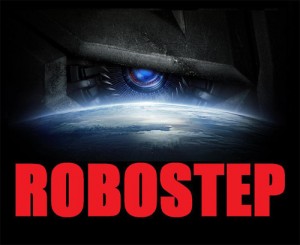 The latest EDM subgenre with expanding diasporas is dubstep. Previously, we covered the changing sound of the genre known as “post-dubstep,” but outside sounds are mingling with the latest incarnation of bass music.
The latest EDM subgenre with expanding diasporas is dubstep. Previously, we covered the changing sound of the genre known as “post-dubstep,” but outside sounds are mingling with the latest incarnation of bass music.
When lasers, robotic samples, and synths end up in the mix, it’s called “robostep,” which recently came to light in a London Free Press piece about artist Datsik. As described by the publication, Datsik sounds like a “mix of synth touches with bass and drums.”
While not a reliable source but representative of the casual terms – even music wise – thrown around, UrbanDictionary.com defines robostep as dubstep containing synthesized samples of “robotic voices,” “mechanical sounds,” and “futuristic fizz.”
Origins, on the other hand, are murky. UrbanDictionary.com points to New York-based DJ E-Lure, whose website Robostep.com and Facebook emphasize a fascination with video games and robots. On the other hand, more visible proponents of the sound, such as U.K.-based producer Kutz, appeared to be using the sounds as early as 2008. More obscure players, such as Russian dubstep producer Grndaz, use the term in releases appearing in 2010.
Overlapping with the genre’s murky origins is an FX library of the same name for dubstep, drum and bass, and game audio producers – all genres from which robostep draws. Its contents apt describe the core sounds of the subgenre: “dark and deformed robotic-style,” “metallic creaks,” “machine bends,” and “laser explosions.”
Yet, robostep’s existence overlaps with other subgenres – particularly the darker elements of what’s becoming known as “filthstep,” or “filthy dubstep,” and the rhythmic qualities of drumstep, a fusion of, as you likely guessed, dubstep and drum and bass. Breakbeat and breakcore elements have crept into the overall sound.
Essentially as the mainstream face of the genre, Canadian producer Datsik incorporates hip-hop elements – the “funky and gangster” qualities, he calls them – into his sound. Recently, his debut album Vitamin D appeared on Steve Aoki’s Dim Mak Records. Previously, he remixed for Diplo, The Crystal Method, and Bassnectar.
With the genre, Datsik is far from the only producer experimenting with hip-hop. Classically-trained, California-based DevuzData took up DJing in 2009, eventually veering in the direction of dubstep with a hiphop influence. Grimblee, a Salt Lake City producer with a background in guitar, also blends dubstep and drum and bass elements with heavier bass lines and hip-hop elements.
Nevertheless, other genres have flown into other robostep producer’s tracks. KODENE and Underiu$ cite heavy metal and darker rock sounds as influences, as well as hip-hop, while Kikaruu describes his as “industrial, percussion-centric,” with dreampop and shoegaze influences. On the softer side of things, Atlanta producer Section 8 gives his works an ambient yet dissonant quality at times.
The outer-genre elements, on the other hand, do not pervade all robostep artists’ tracks. Kutz, the other major face of the sub-subgenre, might be the first dubstep producer to experiment with a heavily-synthesized, dissonant, fuzzy style. His most well-known releases, however, are collaboration with Skream (“Twilight Zone”) and Benga (“I’ll Kut Ya”) dating back to 2008 and 2009, respectively.
Certain pure robosteppers veer in a synthesized direction. Jeulzzz, for instance, pours on the lasers and, through his Facebook page, endorses use of ‘80s drums, while It’s Neuroscience moves as close as you can get, within the dubstep realm, to progressive house on release Mechsteppa.
As a contrast to this, there’s Grndaz, who specifically calls himself a “True underground robostep producer” on his Facebook page. Although containing the robotic and synthesized elements, his rough, metal-crunching quality seems more reminiscent of brostep.
Toward the future – or changing textures, away from booming bass and toward lighter percussion – are where other robostep producers are headed. Horse Force bridges such qualities with distorted, heavy samples and a moderate disco influence. Distrukt, formerly known as Snoeman, also takes a darker, more hypnotic approach – one hinting at ambient soundscapes – but combining this quality with drum and bass and other percussive elements results in an overall post-dubstep feel.





